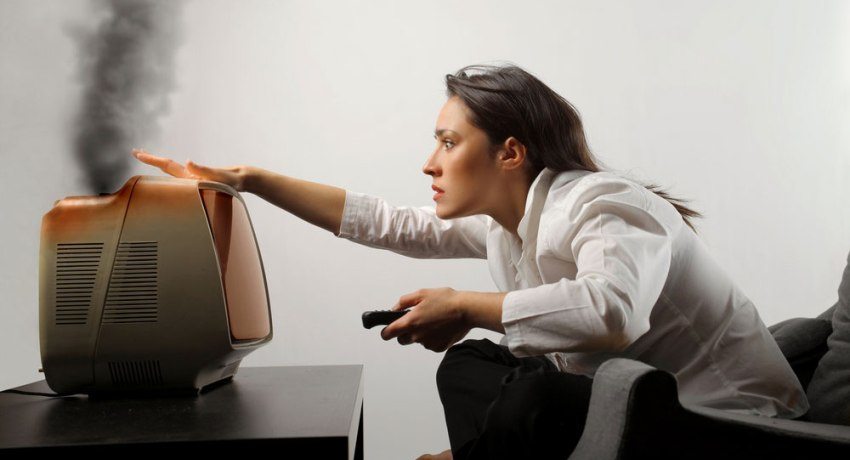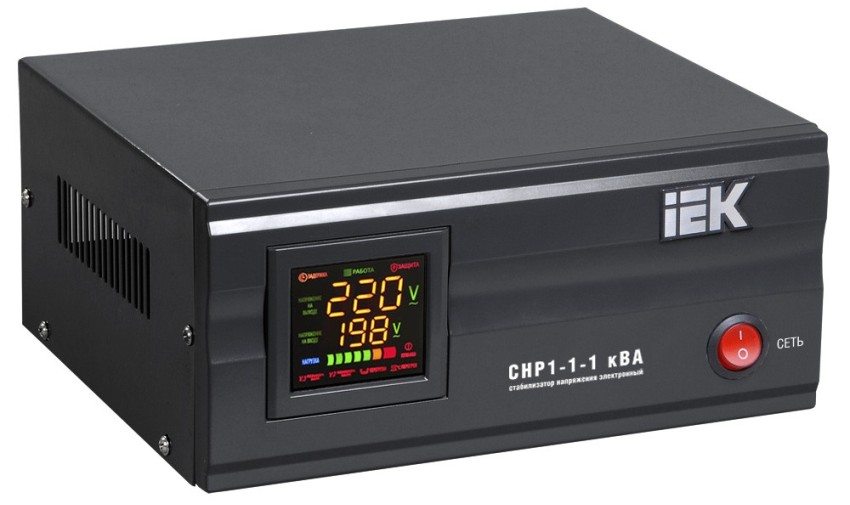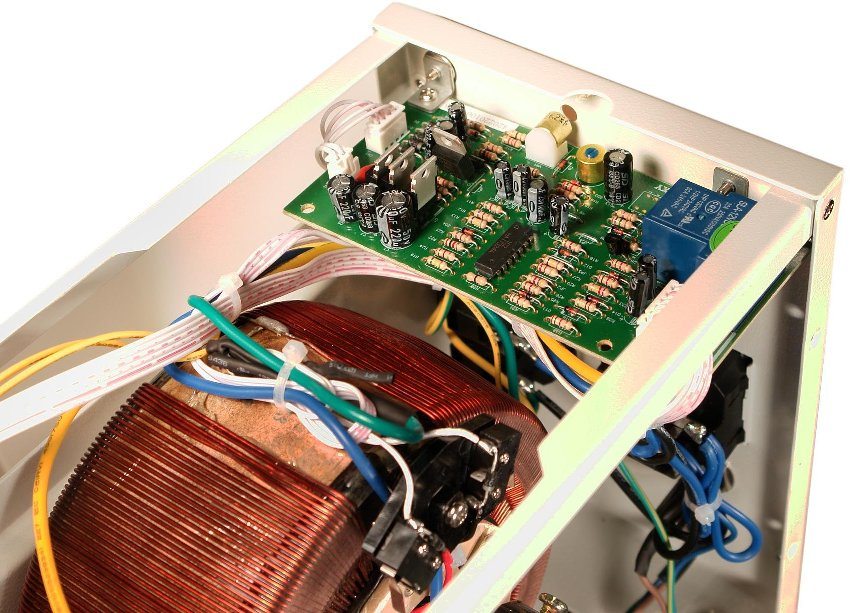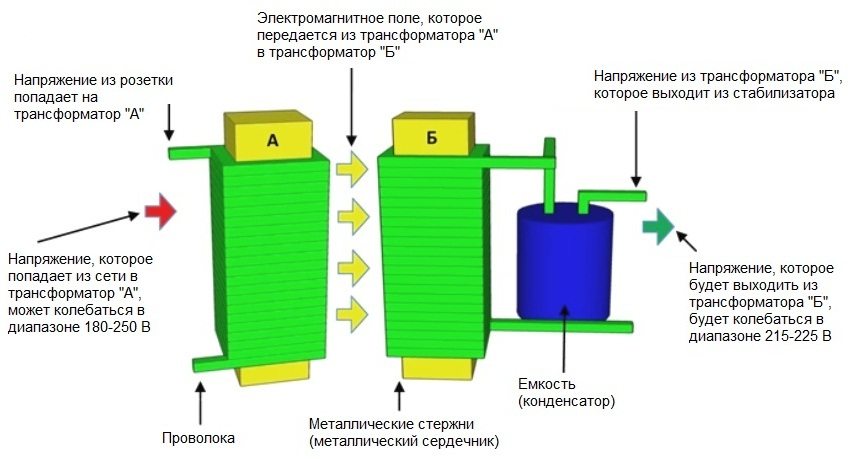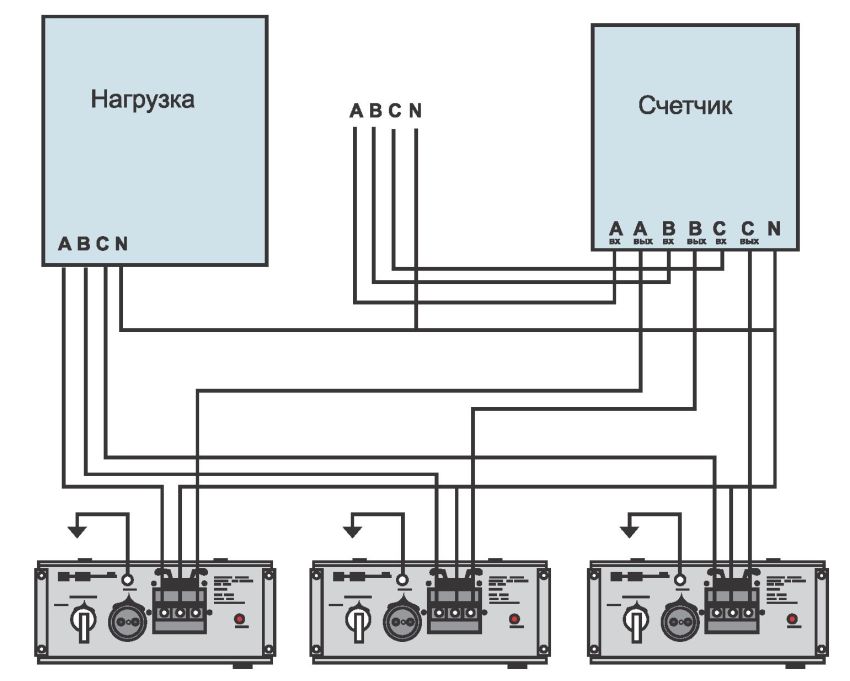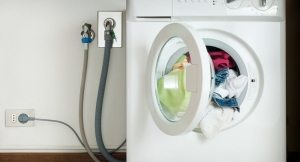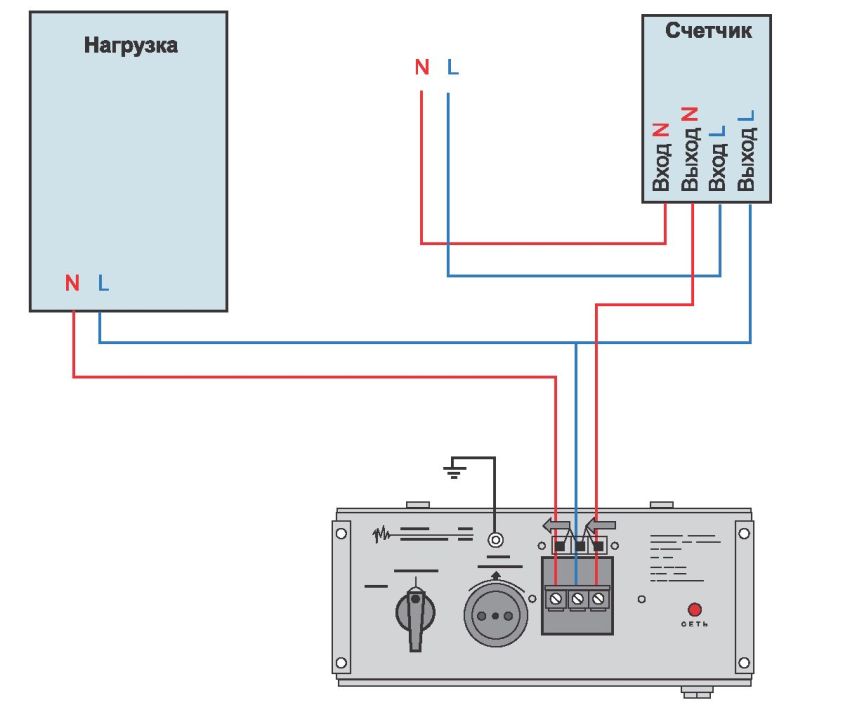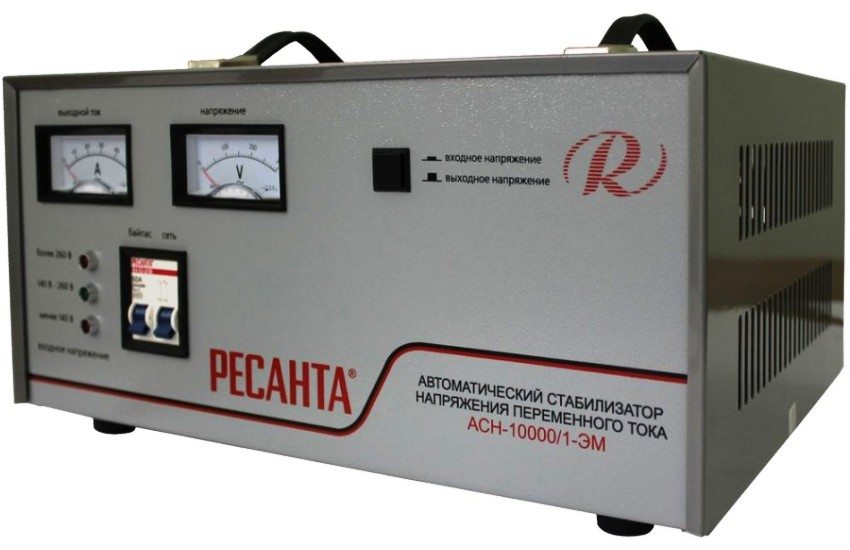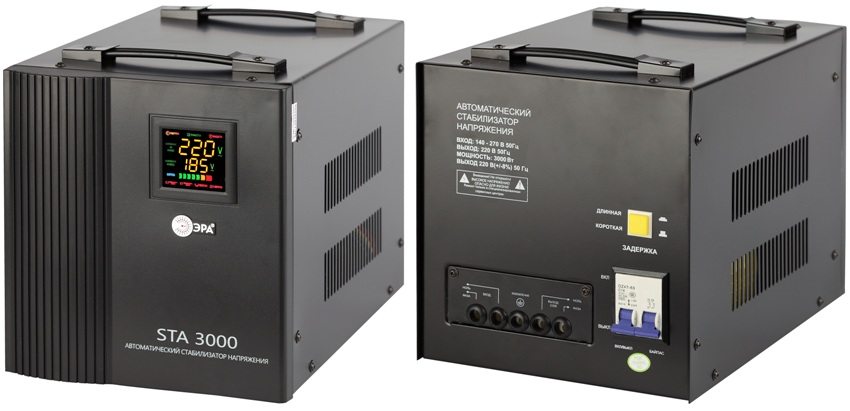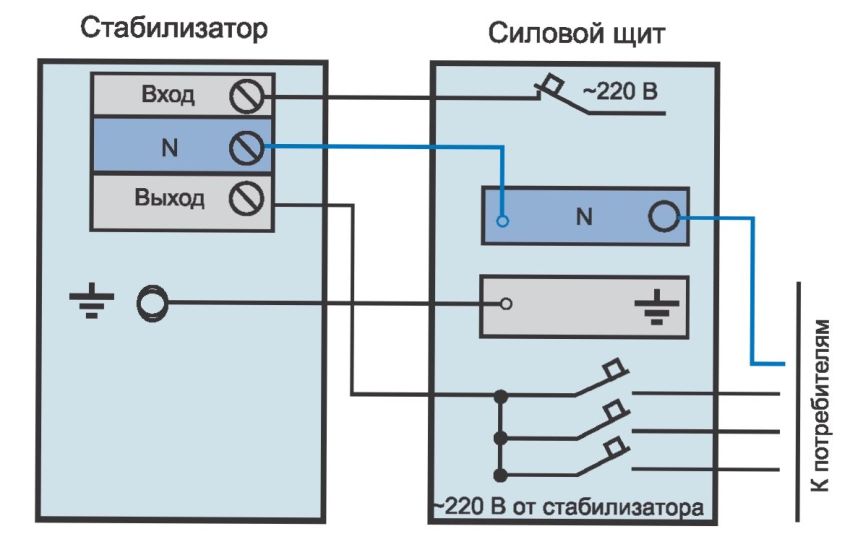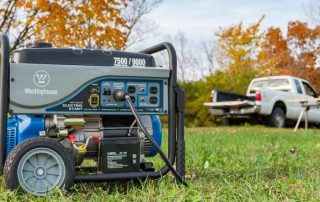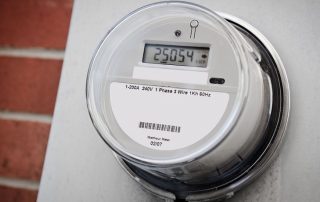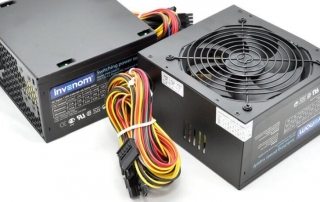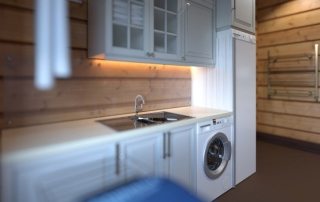Unstable voltage in the electrical network can permanently damage household appliances and electronic equipment in the house. Even if the warranty period for the equipment has not yet passed, you will be denied the service, since the warranty is valid provided that it is operated with a voltage of 220V (± 10%). A 220V voltage stabilizer for home is a protective device specifically designed to equalize voltage surges and surges in the power grid. Modern home voltage regulators are lightweight and lightweight, and can be easily transferred to any place convenient for work.
Content
Voltage stabilizer 220V for home: types and characteristics of devices
Voltage fluctuations in the power grid can be observed for various reasons: in winter, this is the widespread inclusion of electric heaters for additional heating, which leads to a decrease in voltage, in the summer season, an increase in voltage can provoke lightning, possibly falling into substations. Voltage stabilizers 220V for home are designed specifically to smooth out fluctuations and voltage drops in the network.
Helpful advice! To significantly extend the life of household and electronic appliances, you should use them in a power-saving mode, connecting through Voltage regulator.
To find out how to choose 220V voltage stabilizers for your home, you should familiarize yourself with the types and advantages of these devices. The manufacturers of these devices offer several types of stabilizers.
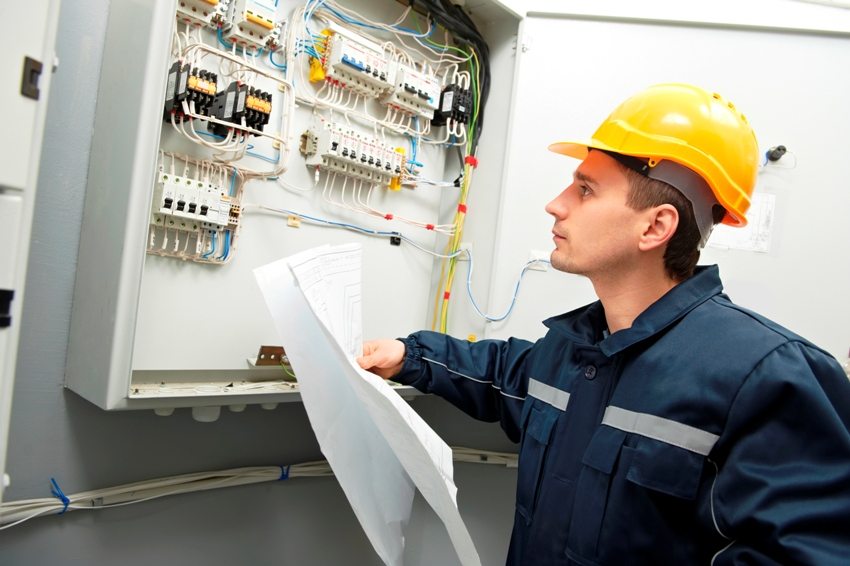
Electronic (relay) rectifiers
Such converters have high efficiency and fast response to fluctuations in the network. Contains transformer windings with multiple taps. Resistant to voltage drops due to the absence of mechanical elements in the device.
Advantages of 220V electronic voltage stabilizer for home:
- compact size;
- silent work;
- wide conversion range;
- overload operation (up to 110% of the nominal);
- reasonable price, long service life.
Among the shortcomings is the low accuracy of the output voltage (error up to 8%). If the house consumes a lot of electricity, such a stabilizer is impractical.
Electromechanical stabilizers
The design of this rectifier assumes an electric motor inside the coil. It drives the winding of graphite-tipped brushes. Sufficiently powerful devices are characterized by smooth regulation and high-precision output voltage.
Advantages of devices:
- high performance;
- overload tolerance (up to 200%);
- silent work;
- affordable price;
- durability.
From the negative points:
- low leveling speed;
- the need for maintenance;
- periodic failure of mechanical elements;
- inability to work at negative temperatures below 5 ° C.
Ferroresonant voltage stabilizers
In their device, they have two or more coils of wire strung on metal rods of the capacitor. Benefits:
- high speed of response to fluctuations in the network;
- work at a temperature range from -40 ° С to + 50 ° С;
- durability of operation.
Disadvantages of 220V ferroresonant voltage stabilizers for home:
- price;
- large dimensions;
- distortion of output indicators;
- noisy work;
- vulnerability to frequency change;
- impossibility of functioning at a load lower than nominal by 10-20%.
Which voltage stabilizers to choose for a private house: single-phase or three-phase
According to the connection method, stabilizers can be stationary, when the device is connected to the panel, and local, connected directly to the electrical appliance. There are single-phase and three-phase stabilizer models:
- single-phase - designed for a power grid with a voltage of 220V, used for household appliances;
- three-phase - operate at a voltage of 380V, are designed for heavy loads, used mainly in production.
When deciding on the type of converter for a private house, you need to clarify which cable is connected to the building. If the cable contains no more than three wires, the power supply system is single-phase. If there are four conductors, the power supply is three-phase. Quite often, a three-phase network is used in private houses. Many owners in the back rooms install woodworking machines or some kind of electric motors that are three-phase consumers.
Choosing stabilizers, you can go in two ways: purchase a three-phase stabilizer, the choice of which is small and is mainly electromechanical models; or redistribute the three-phase load to single-phase consumer devices. Thus, from a three-phase electrical network, three separate single-phase networks are obtained. The load on each of the individual networks will be different in power, depending on the equipment used.
Related article:
|
By purchasing Surge Protectors, you should consider their power. If it is indicated that half of the power loss is observed during operation of the stabilizer, a device with a higher power should be selected.
Helpful advice! When purchasing a voltage stabilizer for your home, pay attention to the markings indicated on the device: У - narrow range of drops; PT - device with increased accuracy; Ш - wide range of drops and tolerance of increased loads.
Choose relatively quiet models with acceptable dimensions. If the space for installing the device in the house is limited, you can use 220V wall voltage stabilizers for your home. Given the absence of noise, compact size, modern design and convenient installation of wall stabilizers, the popularity of these devices is constantly growing.
How to calculate the power of the stabilizer
In order to accurately determine the power of the converter, it is necessary to summarize the power of all equipment falling on the rectifier and add 30% to the resulting sum, so that there is a small power reserve. So, if the total power of all equipment in the house is 4 kW, you will need to connect a 5 kW single-phase voltage stabilizer.
Each home appliance on the back has a power consumption information. When calculating, use the starting power value. This value is defined as the product of the power of the device with the electric motor and the multiplicity factor.
The multiplicity factor for different household electrical appliances:
- refrigerator, automatic Washer — 3-5;
- microwave oven, grinder - 2;
- air conditioners - 2-35;
- puncher - 3.
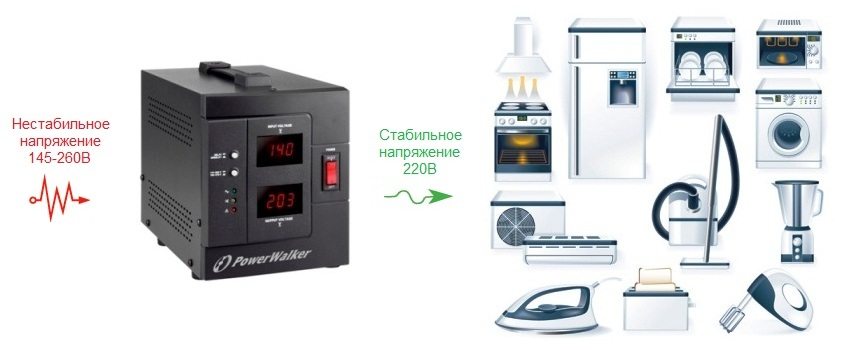
For example, the power when starting a microwave oven at 0.6 kW will be 0.6x2 = 1.2 (kW).
Helpful advice! When calculating the power of the stabilizer, it is necessary to take into account not the total starting power of all household appliances you have, but choose the most powerful electrical equipment to connect through a rectifier. The power of the stabilizer is determined by the power of this device.
The power of the stabilizer is faster and easier to calculate based on the power rating of the machines installed in the dashboard. If the power of the machine is 25A, and the mains voltage is 220V, the required active power of the stabilizer will be 5500 W (25x220) or 5.5 kW. It is also worth considering the cross section of the wire in the wiring: if the apartment is located in an old building, then the wiring in such houses has a cross section of 4 mm² with a maximum current of 32A and it makes no sense to install a powerful rectifier. A stabilizer with a capacity of 20 kVA will be relevant for new houses. Such equipment is able to protect household appliances from short circuits.

Choosing a voltage stabilizer for your home
The electrical equipment market offers a wide range of voltage stabilizers from different manufacturers. Among them are Volt, Resanta, Volter, Luxeon and others.
The most relevant area of using voltage stabilizers is the protection of video equipment, refrigerators, pumps and other household appliances. The converters will deal with the problem of voltage surges, overloads, overheating and short circuits.
Resanta converters are very popular. If voltage drops in the network are often observed, you can give preference to a 220V relay voltage regulator for Resant's house of 10 kW. Such stabilizers are suitable for many types of household equipment: refrigerators, electric stoves, pumps and gas boilers.
If there is a lot of electrical equipment in the house, involving the simultaneous operation of several devices, and the voltage from time to time jumps from 190V to 250V, then the equipment can be protected by connecting a powerful single-phase voltage stabilizer of 15 kW. This rectifier will provide uninterrupted operation of several consumers with different loads.
If a three-phase cable is connected to the house, and 380V consumers are not supposed to be used, it makes sense to purchase several single-phase stabilizers, and they can be different in type and price. It all depends on your choice. For example, if the main and most powerful equipment you have is in the kitchen, you can use a 10 kW single-phase voltage regulator. For the living room and bedroom, where there is only a TV and a computer from the equipment, you can get by by connecting a 3 kW single-phase voltage stabilizer.In addition, more or less accurate rectifiers can be used on different phases, which are accordingly different in cost.
DIY 220V voltage regulator assembly
Many craftsmen consider the cost of factory rectifiers too high, so they prefer to make it themselves. All accessories for the device are purchased from the respective stores. The converter is assembled with your own hands according to the voltage regulator circuit 220V. The layout of all elements is printed on a printer and transferred to the board using a conventional iron.
Of the positive qualities of such stabilizers, only the low cost and the ability to replace a failed element on their own can be noted. As for the quality and reliability of such models, then there is a clear advantage in factory devices. Indeed, in order to assemble a model with high efficiency and power, special measuring devices are needed.
To assemble the stabilizer yourself, you need to understand all the intricacies of the operation of the rectifiers, purchase all the relevant parts and perform their correct installation. If there is no such confidence, it is better to give preference to a high-quality factory model, albeit more expensive in cost, but surpassing the home-made counterpart in all other criteria.
If the price of all household equipment and electrical appliances in your home is significantly higher than the cost of even an expensive voltage converter, it will be a natural decision to purchase one.
